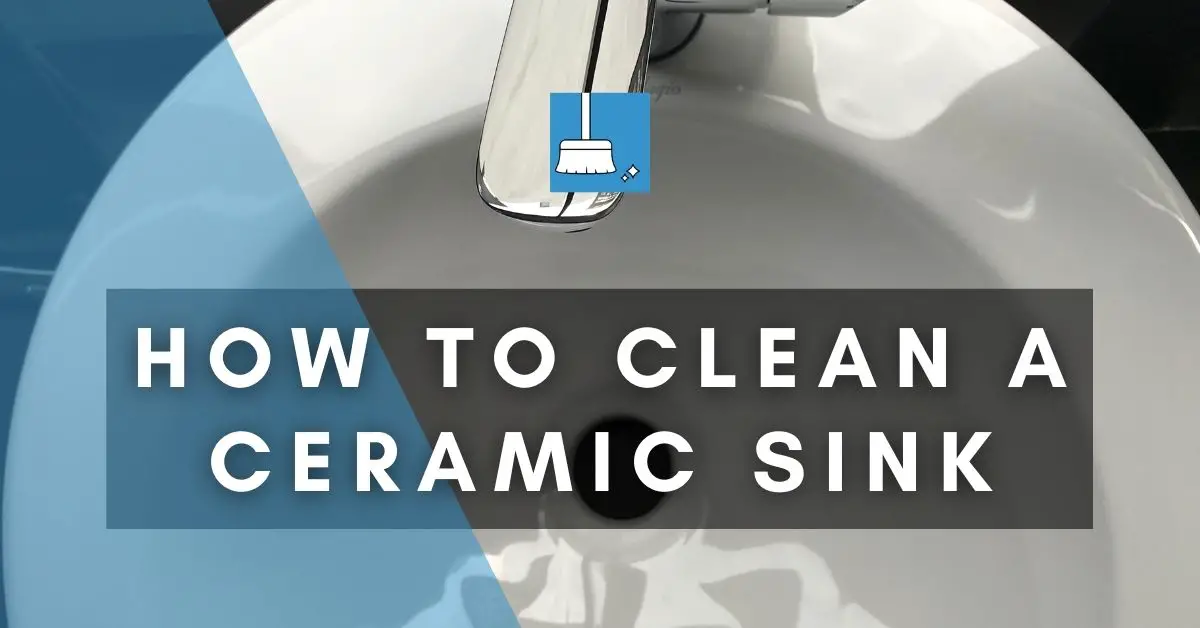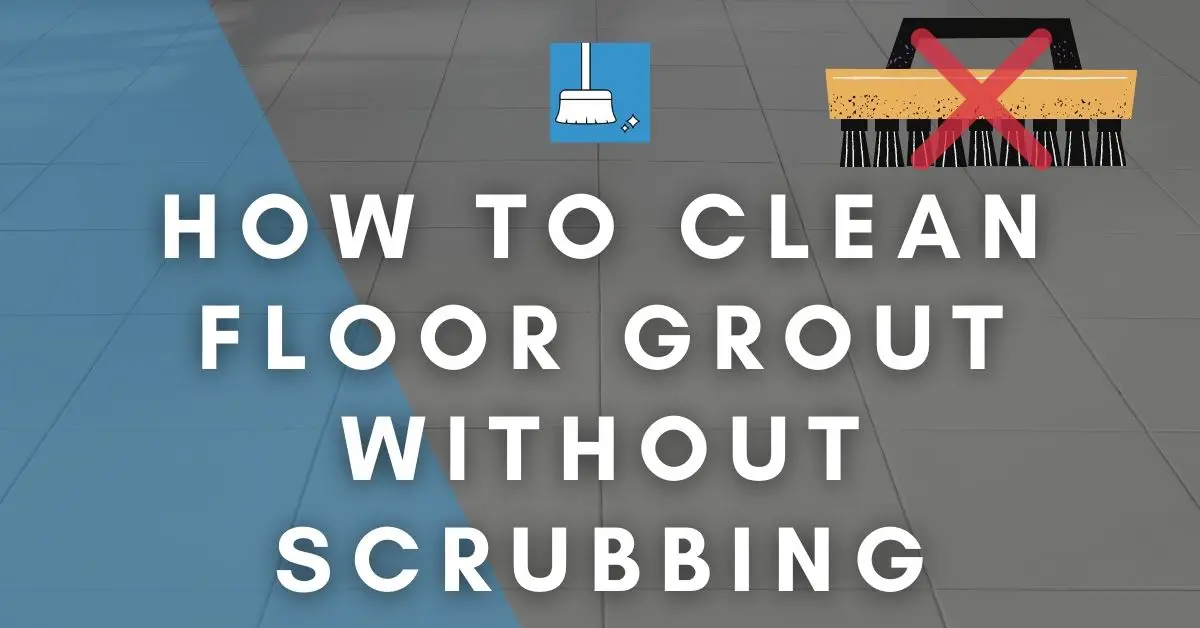You chose ceramic sinks for your kitchen and bathroom because they’re simply beautiful, have smooth surfaces which discourage germs, and are highly durable.
But over the months or years, they have lost their shine and you don’t know how to clean them properly to bring back the shine.
Well, it’s entirely possible and I’m here to show you how to do it. With the right materials and methods, cleaning ceramic sinks is super easy.
Are Ceramic Sinks Easy to Clean?
Yes, they are! Ceramic sinks are the easiest to clean because their smooth and sealed surfaces make it difficult for dirt to get into the material. It is also hard for dirt to stick to these surfaces.
How to Clean a Ceramic or Porcelain Sink (5 Methods)
Whether your ceramic sinks are white, grey, or any other color, the following methods will prove beneficial in cleaning them.
Method 1: Cleaning Ceramic Sink with Baking Soda
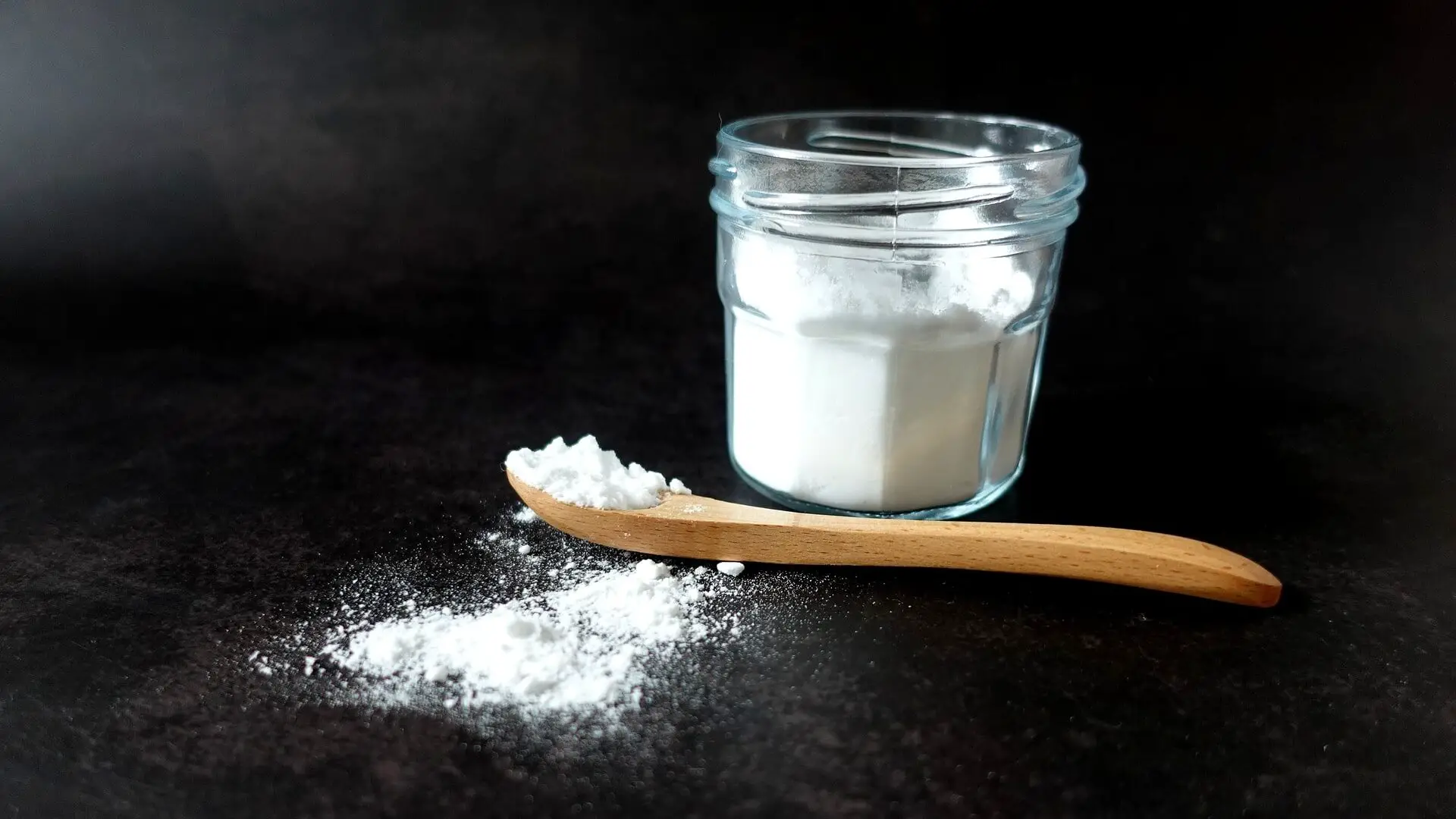
Baking soda works well when used to clean ceramic sinks because it is abrasive, enabling you to remove stains and grime effortlessly. It is also quite easy to find in your household items.
There are two methods of using baking soda to clean your sink:
OPTION A: Baking Soda & Ammonia
YOU’LL NEED
Baking soda
Ammonia
Bowl
Toothbrush
Sponge
Towel/rag
Water
STEPS
1- Get your ceramic sink wet by splashing water around it or filling it with water and allowing it to drain completely.
2- Damp your sponge a bit. Make sure it isn’t too wet.
3- Mix 4 spoons of baking soda and 1 spoon of ammonia into a bowl and mix well till it becomes a paste.
4- Apply the paste to your wet ceramic sink with a toothbrush, coating all the areas.
5- Allow it to sit for about 10 minutes.
6- Use your damp sponge to clean the sink thoroughly.
7- Rinse with clean water. Then dry it off with a towel or rag.
Your sink should be rid of dirt, grime, and stains.
CAUTION: This method should be avoided for black sinks as the use of Ammonia can harm the color.
You may also choose to use lemons. Here’s how!
Option B: Baking Soda and Lemon
The acidic nature of lemon makes it perfect for removing stubborn stains by breaking them down.
YOU’LL NEED
Baking soda
Lemon
Sponge
Water
STEPS
1- Coat your wet sink with baking soda. About 1/2 a cup should be enough.
2- Let it sit for about 10 minutes and then scrub with your damp sponge.
3- Rinse the sink with water.
4- Cut your lemon into wedges and use each slice to rub your sink squeezing out the juice. Make sure you use it to rub darkened areas and tough stains very well.
5- Let it sit for about 30 minutes, allowing the acid to break down the stains.
6- Rinse the sink thoroughly with water.
Method: 2 Cleaning Ceramic Sink with Vinegar
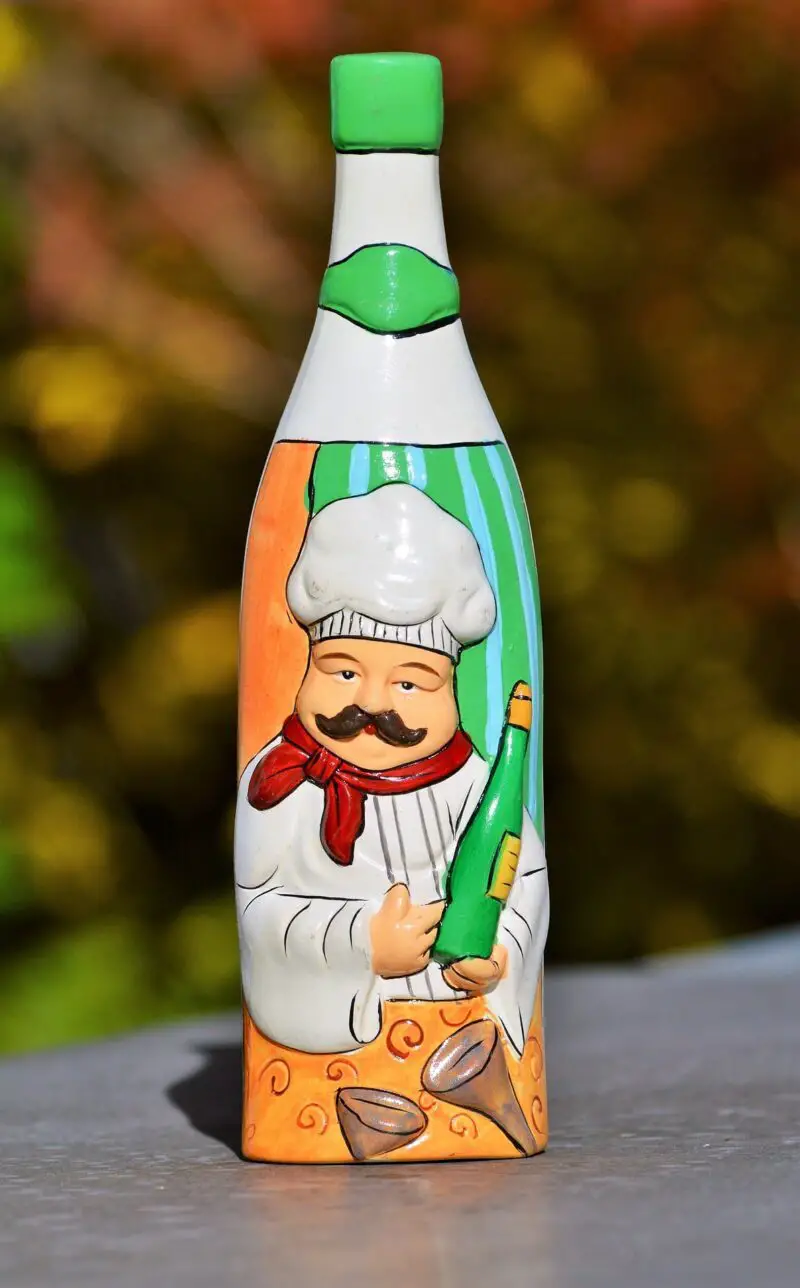
Vinegar is used for cooking but it is also a great cleaning agent because it is made from acetic acid. (Source) This means it not only cleans but also disinfects your ceramic sink and dissolves all mineral deposits, grime and dirt in it.
There are two methods of using vinegar to clean your ceramic sink:
Option A: Vinegar & Dish Detergent
This method works perfectly, removing all stubborn stains and steel marks.
YOU’LL NEED
Vinegar
Dish detergent
Mildly abrasive Sponge
Hot water
Towel/rag
STEPS
1- Mix 1 tablespoon of dish detergent in 1/2 gallon of water. Choose a detergent that has a grease-cutting agent.
2- With a mildly abrasive sponge, scrub the sink thoroughly.
3- Rinse it well with running water.
4- Now, plug the sink and fill it with vinegar and hot water. 1 part vinegar and 3 parts hot water is adequate.
5- Leave the solution in the sink for about 30-60 minutes.
6- Drain the solution and wash with detergent again.
7- Rinse with clean water.
8- Dry it off with a towel or rag.
OPTION B: Vinegar & Cream of Tartar
Cream of tartar is a non-abrasive cleaning agent that works perfectly in removing stains. It is not toxic and can be used instead of bleach.

YOU’LL NEED
Vinegar
Dish detergent
Sponge
Cream of Tartar
Bowl
Spoon
STEPS
1- Mix cream of tartar with vinegar in a small bowl. 1 part tartar and 1 part vinegar are enough.
2- Use a spoon to apply it to your ceramic sink. Pay attention to areas with stubborn stains and grime. Apply some extra there.
3- Allow it to sit for 10 minutes.
4- Scrub it with a sponge thoroughly.
5- Rinse it with clean water.
Instead of vinegar, hydrogen peroxide can also be added to tartar to remove old stains and grime.
Method: 3 Cleaning Your Ceramic Sink with Bleach
This method works when there are stains that have refused to leave after trying other methods. Do not use this method on black ceramic sinks.

YOU’LL NEED
Rubber gloves and safety glasses
Bleach
Water
Spray bottle
Sponge
Towel/rag
STEPS
1- Wear your rubber gloves to protect your skin as bleach is quite toxic. You may also want to use safety glasses to protect your eyes.
2- Open your windows letting the fresh air in and switch the fan on.
3- Mix 1 part of bleach with 1 part of water.
4- Pour the solution into a spray bottle and shake.
5- Spray the solution on your ceramic sink thoroughly and let the solution sit on it for about 10 minutes.
6- Use a sponge to wipe the sink well.
7- Rinse with clean water and dry the ceramic sink with a towel or rag.
CAUTION: This method should be avoided for black sinks as the use of Bleach can harm the color.
Method: 4 Cleaning Ceramic Sink with Trisodium Phosphate
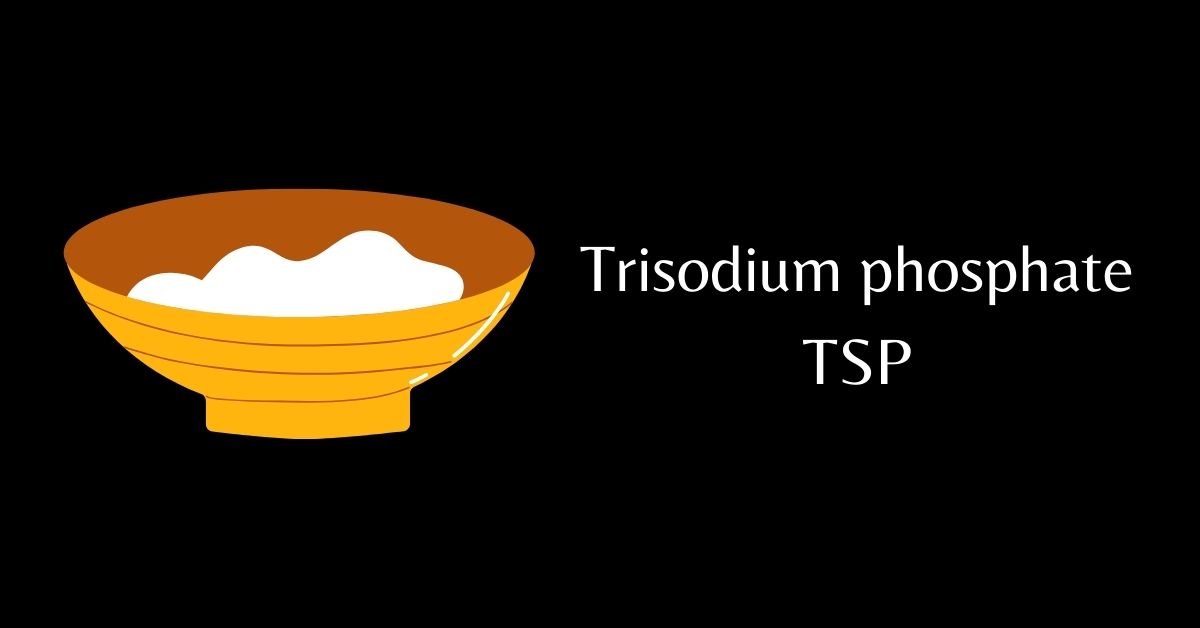
Cleaning your ceramic sink with trisodium phosphate is a very good method of getting oil stains and stubborn grime off your sink without bleach or ammonia. So it is a comparatively safer method. Trisodium also disinfects and kills germs. (Source)
YOU’LL NEED
Trisodium phosphate
Hot water
Sponge
Container
Towel
STEPS
1- Pour 1 gallon of hot water into a container.
2- Add 1 tablespoon of trisodium phosphate and mix well. The hot water will ensure the trisodium phosphate dissolves quickly.
3- Use the solution to wash your sink thoroughly with a sponge.
4- Rinse the ceramic sink with clean water and dry it with a towel.
After using all these methods, if you still notice any stubborn stains or marks, you can use a pumice stone to get rid of them.
Method 5: Cleaning Ceramic Sink with Pumice Stone
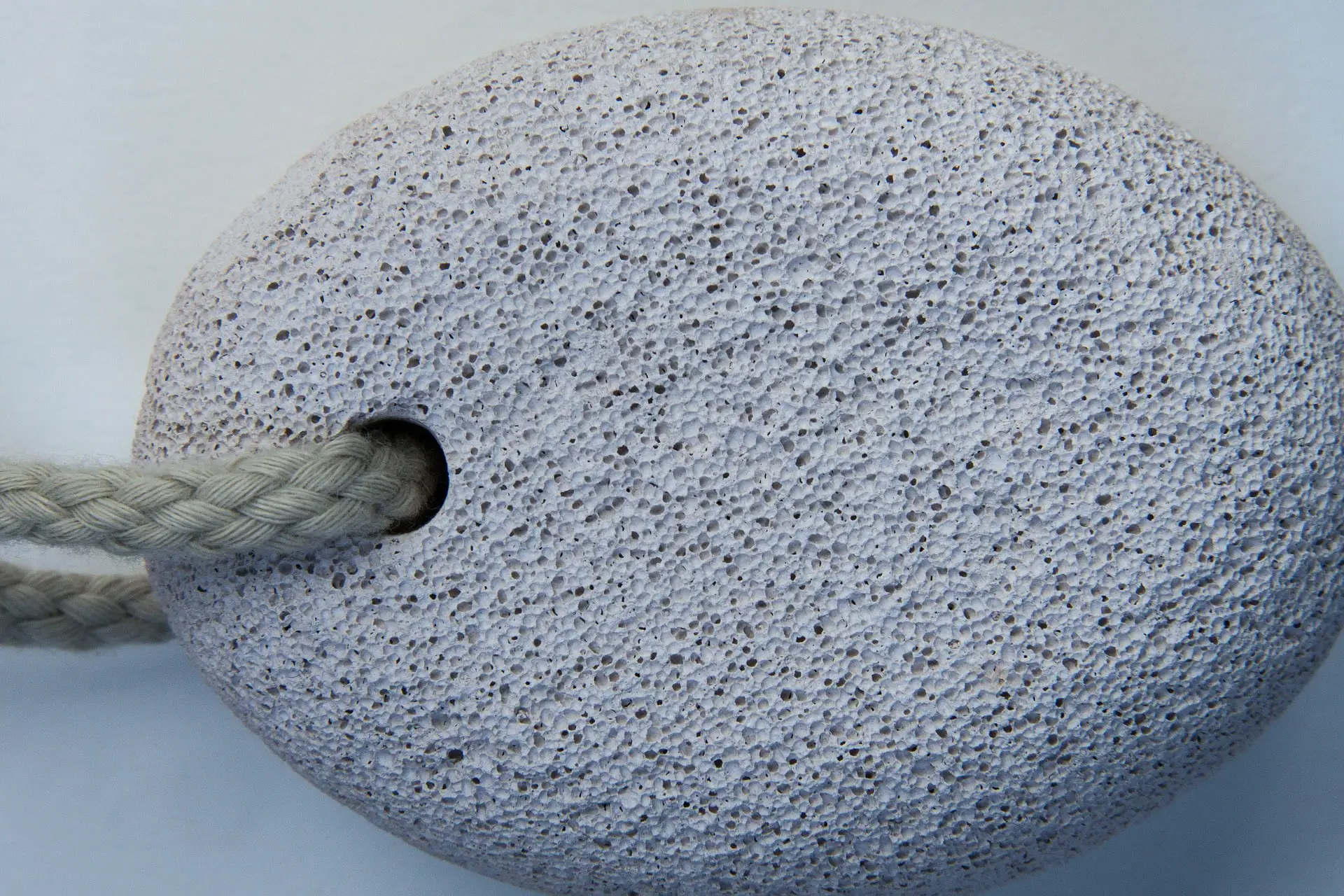
YOU’LL NEED
Pumice Stone
Water
STEPS
1- Locate the stubborn stains and marks.
2- Take your pumice stone and get it wet. You must not use a dry pumice stone.
3- Use the pumice stone to rub the stubborn stains gently. If you rub it hard, the finish on the sink can come off. You don’t want that.
4- Rinse the sink with water and the stains would be gone.
METHOD 6: Cleaning with Bar Keeper’s Friend
Bar Keeper’s Friend comes as a liquid and also as powder. You can use any of it that you like.
Using the liquid can make you scrub longer but it works well. The powdered kind works faster which makes it easier to clean.
YOU’LL NEED
Bar Keeper’s Friend
Non-abrasive sponge
STEPS
1- If you are using the liquid type, squirt a small amount into the sink. If it’s the powdered type, use a spoon to spread the powder into the sink, covering every area.
2- Use a non-abrasive sponge to scrub the sink. Do this almost immediately after applying the Bar Keeper’s Friend.
This is because it contains oxalic acid that can discolor or scratch your sink. The oxalic acid is effective in lifting off those stains and stubborn grime but don’t let it stay too long in your sink.
3- After scrubbing, rinse your sink with water and your sink will be all shiny.
METHOD 7: Cleaning with Rust Dissolver

Naval jelly is very effective in removing rust stains from bathroom tiles & ceramic and porcelain sinks. If you have an old sink that is so rusty that all cleaning methods have failed then try this one:
YOU’LL NEED
Rust Dissolver
Sponge
STEPS
1- Apply naval jelly to the rust stains. Just a thin coat will do.
2- Monitor it until the stains change color.
3- As soon as the stains change their color, rinse them with water.
4- You can use a sponge to apply a little pressure to the spots and rinse the area again.
The rust stains would have disappeared and your sink will be spotless.
How to Get Rid of Scratches on Ceramic Sink
Ceramic sinks, after a while of use, tend to have scratches. This can be caused by metals, curling irons, blow dryers, etc. coming in contact with the sink.
To get rid of minor scratches you can use baking soda.
1- Just spread the baking soda over the scratch mark and leave it for about 10 minutes.
2- Then use a soft sponge or cloth to wipe it back and forth.
3- Rinse with water.
This should get the job done.
If the scratches still persist, use bleach.
1- Mix bleach and water, in equal parts.
2- Plug the sink and fill it with the solution.
3- Leave it for a few hours.
4- Use a cloth or sponge to wipe and rinse it with water.
The scratches would be gone.
You can also use a pumice stone to get rid of scratches as explained before.
How to Clean a Black Ceramic Sink
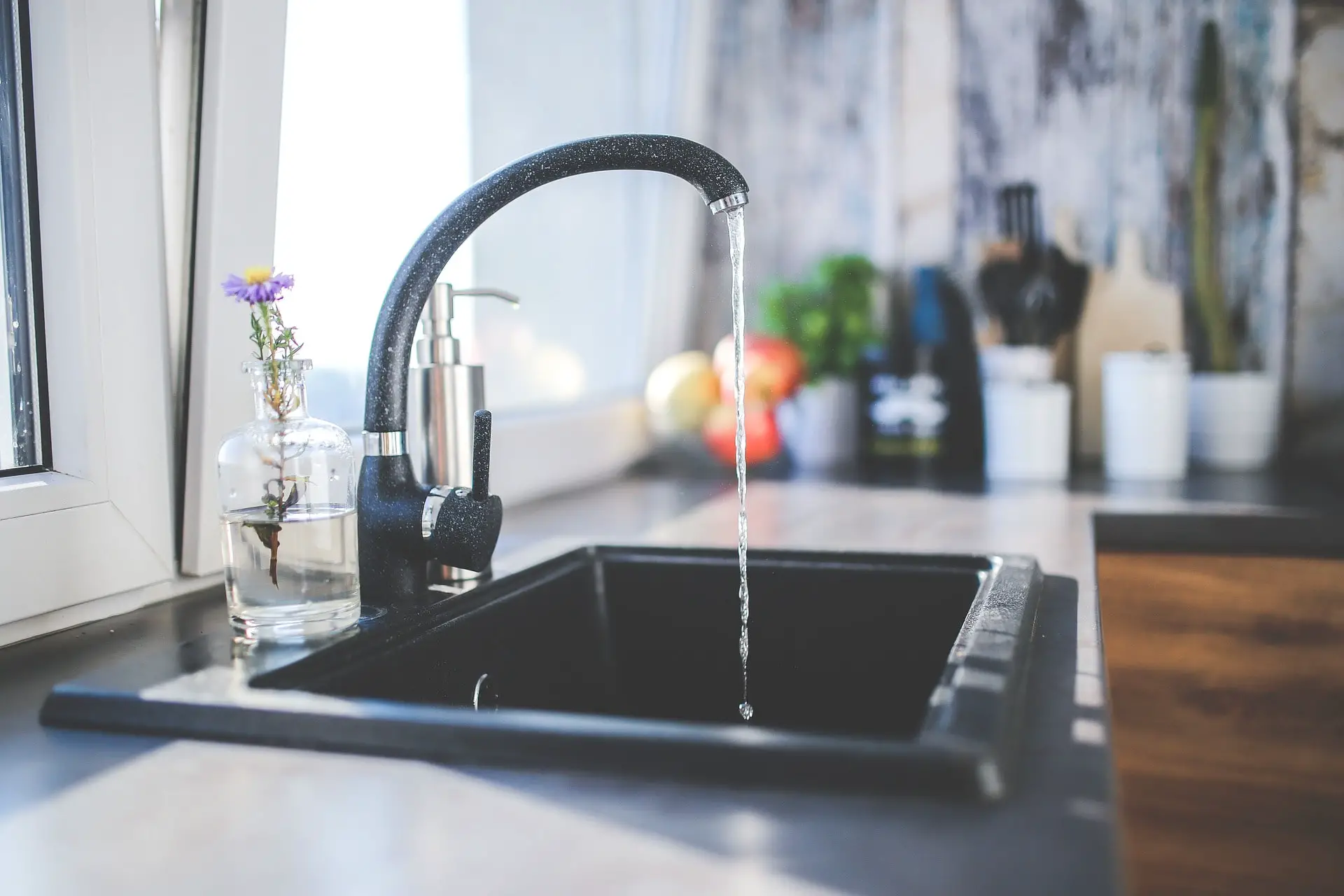
The method for cleaning a black ceramic sink isn’t all that different from the methods explained above. You should note, however, that black ceramic sinks should not be washed with bleach, ammonia, or scouring powders. These chemicals can damage the surface.
Tips for Care of a Black Ceramic Sink
1- You should wash your black ceramic sink with dish detergent. Just use your sponge and detergent to clean the sink after every use or at least once a day and your sink will continue to be in good shape.
2- White vinegar also works well in getting stains out of a black ceramic sink.
3- For highly stubborn stains, use baking soda.
How to Clean White Enamel Sink
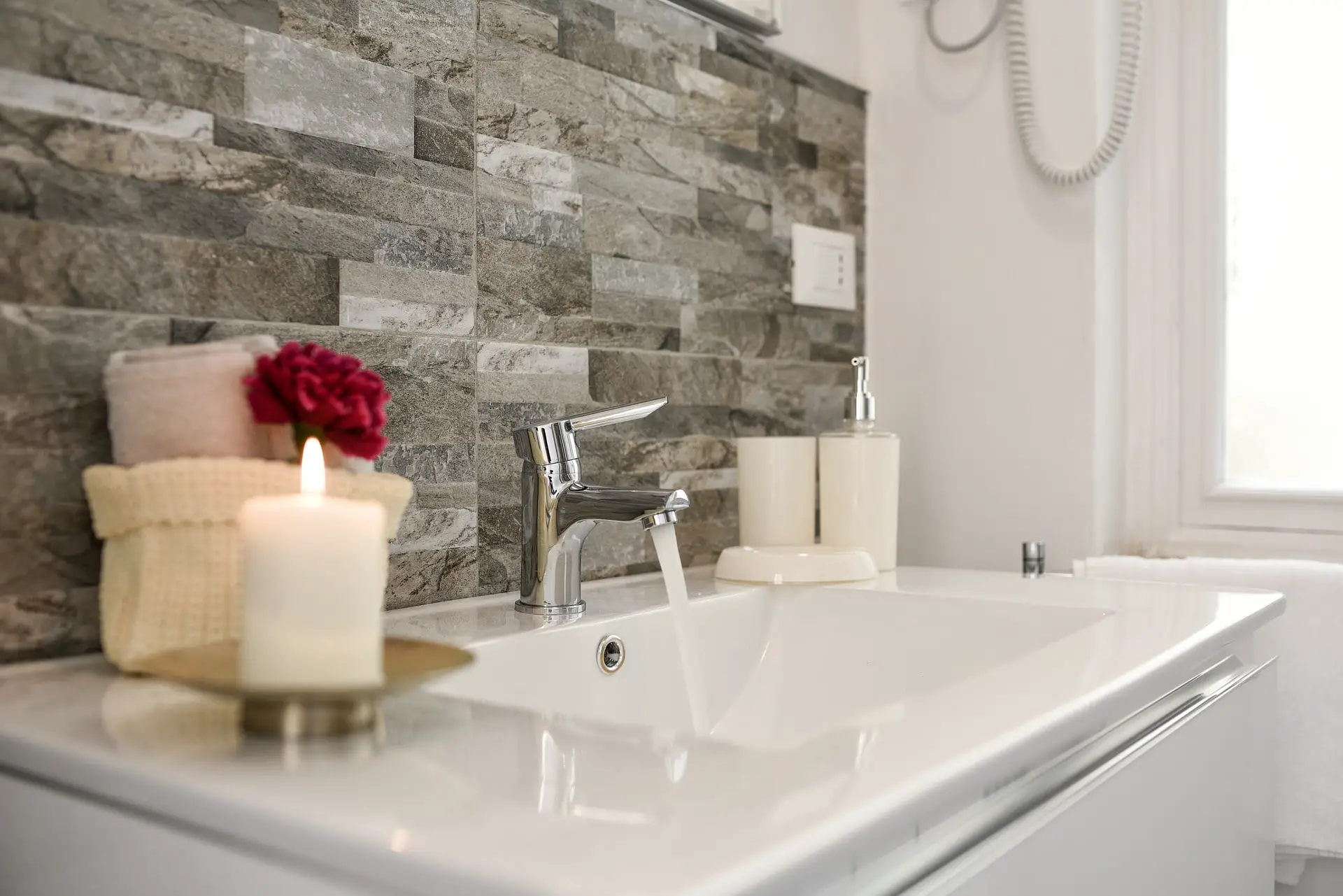
Cleaning your white enamel sink is quite easy. In addition to the methods explained which work well for the enamel sink, you can clean with baking soda and hydrogen peroxide.
YOU’LL NEED
Baking Soda
Hydrogen Peroxide
STEPS
1- Coat your wet enamel sink with baking soda.
2- Add a few drops of hydrogen peroxide.
3- Scrub the surface with a soft sponge and leave for a few minutes.
4- Rinse the sink with running water and you are done.
If there are stubborn stains, you can use lemon slices to clean them off.
Ceramic Sink Maintenance
The most effective way of keeping your ceramic sink around for a long time looking new always is constant maintenance.
You can do this by:
A- Cleaning it regularly, preferably after every use. Don’t wait for your sink to get the dirt before cleaning. After every use, wash your sink with soap and water and rinse thoroughly.
B- Making sure you do not leave items that can stain the sink inside it. Leaving tea bags, wine, toothpaste leftover, etc. inside your sink will get it stained which will be difficult for you to clean if you leave them there for a long time.
Conclusion
Cleaning the bathroom and kitchen sink stains can be a walk in the park when you know the right methods.
Bathroom sinks tend to have lots of stains from toothpaste, soap scum, hair dye, shaving cream, etc. but it doesn’t make them more difficult to clean.
Magic eraser are also good cleaning tools to clean porcelain tiles or ceramic sinks. These are gentle and do not leave scratches.
cheers!

